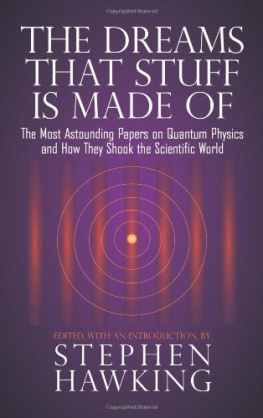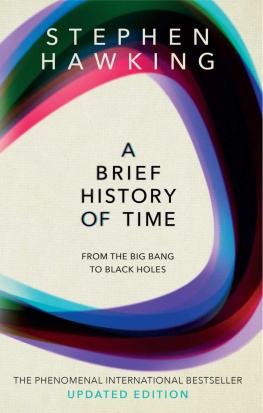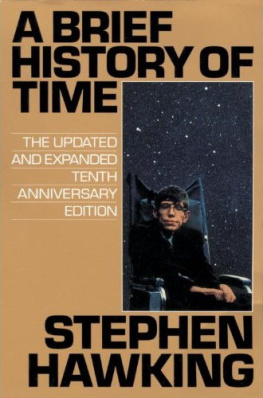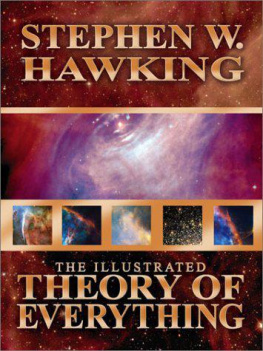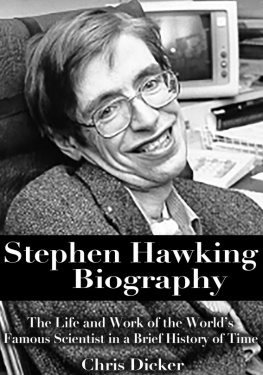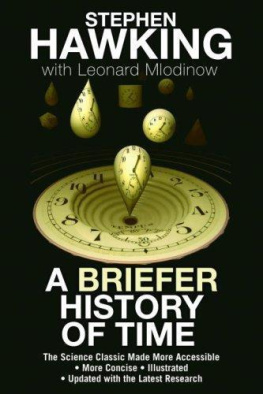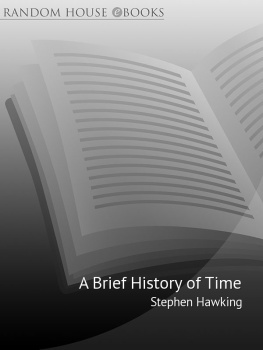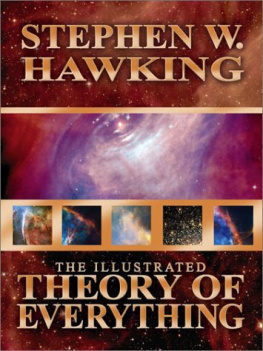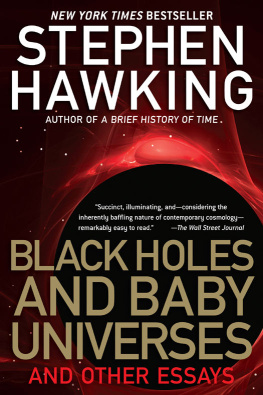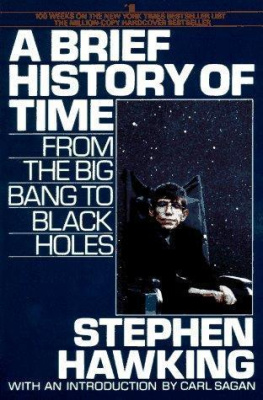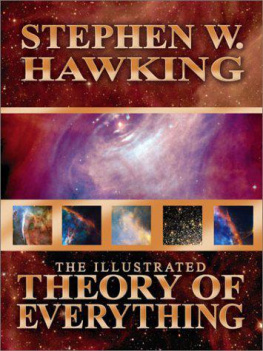A Brief History of Time
A Brief History of Time
by Hawking, Stephen
FOREWARD
I didnt write a foreword to the original edition of A Brief History of Time. That was done by Carl Sagan. Instead, I wrote a short piece titled Acknowledgments in which I was advised to thank everyone. Some of the foundations that had given me support werent too pleased to have been mentioned, however, because it led to a great increase in applications.
I dont think anyone, my publishers, my agent, or myself, expected the book to do anything like as well as it did. It was in the London Sunday Times best-seller list for 237 weeks, longer than any other book (apparently, the Bible and Shakespeare arent counted). It has been translated into something like forty languages and has sold about one copy for every 750 men, women, and children in the world. As Nathan Myhrvold of Microsoft (a former post-doc of mine) remarked: I have sold more books on physics than Madonna has on sex.
The success of A Brief History indicates that there is widespread interest in the big questions like: Where did we come from? And why is the universe the way it is?
I have taken the opportunity to update the book and include new theoretical and observational results obtained since the book was first published (on April Fools Day, 1988). I have included a new chapter on wormholes and time travel. Einsteins General Theory of Relativity seems to offer the possibility that we could create and maintain wormholes, little tubes that connect different regions of space-time. If so, we might be able to use them for rapid travel around the galaxy or travel back in time. Of course, we have not seen anyone from the future (or have we?) but I discuss a possible explanation for this.
I also describe the progress that has been made recently in finding dualities or correspondences between apparently different theories of physics. These correspondences are a strong indication that there is a complete unified theory of physics, but they also suggest that it may not be possible to express this theory in a single fundamental formulation. Instead, we may have to use different reflections of the underlying theory in different situations. It might be like our being unable to represent the surface of the earth on a single map and having to use different maps in different regions. This would be a revolution in our view of the unification of the laws of science but it would not change the most important point: that the universe is governed by a set of rational laws that we can discover and understand.
On the observational side, by far the most important development has been the measurement of fluctuations in the cosmic microwave background radiation by COBE (the Cosmic Background Explorer satellite) and other collaborations. These fluctuations are the finger-prints of creation, tiny initial irregularities in the otherwise smooth and uniform early universe that later grew into galaxies, stars, and all the structures we see around us. Their form agrees with the predictions of the proposal that the universe has no boundaries or edges in the imaginary time direction; but further observations will be necessary to distinguish this proposal from other possible explanations for the fluctuations in the background. However, within a few years we should know whether we can believe that we live in a universe that is completely self-contained and without beginning or end.
Stephen Hawking
A Brief History of Time
CHAPTER 9
THE ARROW OF TIME
In previous chapters we have seen how our views of the nature of time have changed over the years. Up to the beginning of this century people believed in an absolute time. That is, each event could be labeled by a number called time in a unique way, and all good clocks would agree on the time interval between two events. However, the discovery that the speed of light appeared the same to every observer, no matter how he was moving, led to the theory of relativity - and in that one had to abandon the idea that there was a unique absolute time. Instead, each observer would have his own measure of time as recorded by a clock that he carried: clocks carried by different observers would not necessarily agree. Thus time became a more personal concept, relative to the observer who measured it.
When one tried to unify gravity with quantum mechanics, one had to introduce the idea of imaginary time. Imaginary time is indistinguishable from directions in space. If one can go north, one can turn around and head south; equally, if one can go forward in imaginary time, one ought to be able to turn round and go backward. This means that there can be no important difference between the forward and backward directions of imaginary time. On the other hand, when one looks at real time, theres a very big difference between the forward and backward directions, as we all know. Where does this difference between the past and the future come from? Why do we remember the past but not the future?
The laws of science do not distinguish between the past and the future. More precisely, as explained earlier, the laws of science are unchanged under the combination of operations (or symmetries) known as C, P, and T. (C means changing particles for antiparticles. P means taking the mirror image, so left and right are interchanged. And T means reversing the direction of motion of all particles: in effect, running the motion backward.) The laws of science that govern the behavior of matter under all normal situations are unchanged under the combination of the two operations C and P on their own. In other words, life would be just the same for the inhabitants of another planet who were both mirror images of us and who were made of antimatter, rather than matter.
If the laws of science are unchanged by the combination of operations C and P, and also by the combination C, P, and T, they must also be unchanged under the operation T alone. Yet there is a big difference between the forward and backward directions of real time in ordinary life. Imagine a cup of water falling off a table and breaking into pieces on the floor. If you take a film of this, you can easily tell whether it is being run forward or backward. If you run it backward you will see the pieces suddenly gather themselves together off the floor and jump back to form a whole cup on the table. You can tell that the film is being run backward because this kind of behavior is never observed in ordinary life. If it were, crockery manufacturers would go out of business.
The explanation that is usually given as to why we dont see broken cups gathering themselves together off the floor and jumping back onto the table is that it is forbidden by the second law of thermodynamics. This says that in any closed system disorder, or entropy, always increases with time. In other words, it is a form of Murphys law: things always tend to go wrong! An intact cup on the table is a state of high order, but a broken cup on the floor is a disordered state. One can go readily from the cup on the table in the past to the broken cup on the floor in the future, but not the other way round.
The increase of disorder or entropy with time is one example of what is called an arrow of time, something that distinguishes the past from the future, giving a direction to time. There are at least three different arrows of time. First, there is the thermodynamic arrow of time, the direction of time in which disorder or entropy increases. Then, there is the psychological arrow of time. This is the direction in which we feel time passes, the direction in which we remember the past but not the future. Finally, there is the cosmological arrow of time. This is the direction of time in which the universe is expanding rather than contracting.
In this chapter I shall argue that the no boundary condition for the universe, together with the weak anthropic principle, can explain why all three arrows point in the same direction - and moreover, why a well-defined arrow of time should exist at all. I shall argue that the psychological arrow is determined by the thermodynamic arrow, and that these two arrows necessarily always point in the same direction. If one assumes the no boundary condition for the universe, we shall see that there must be well-defined thermodynamic and cosmological arrows of time, but they will not point in the same direction for the whole history of the universe. However, I shall argue that it is only when they do point in the same direction that conditions are suitable for the development of intelligent beings who can ask the question: why does disorder increase in the same direction of time as that in which the universe expands?


